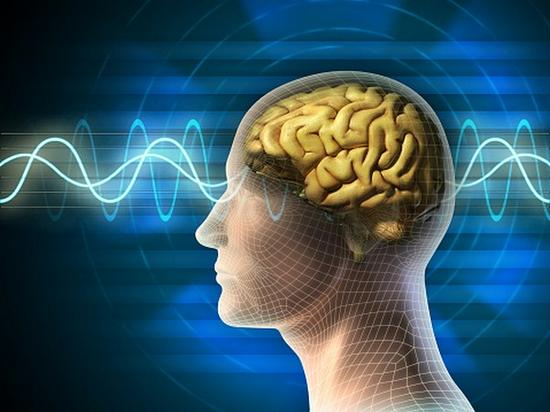就算脸盲,熟人的脸总是能分辨出来的。 这是为什么呢? 也许,来自达特茅斯学院的一项研究可以解答这个疑惑。识别熟悉面孔的能力是社交的基础。但是大脑如何在熟人之间处理这些信息一直是个问题。这次,这个问题的答案可能已被揭开一角。

Recognizing familiar faces relies on a neural code shared across brains
The ability to recognize familiar faces is fundamental to social interaction. This process provides visual information and activates social and personal knowledge about a person who is familiar. But how the brain processes this information across participants has long been a question. Distinct information about familiar faces is encoded in a neural code that is shared across brains, according to a new Dartmouth study published in the Proceedings of the National Academy of Sciences.
识别熟悉面孔的能力是社交的基础。在这个识别的过程中,除了提供了视觉信息,一个熟悉的人的个人相关信息也被激活了。但是大脑如何在熟人之间处理这些信息一直是个问题。来自达特茅斯学院的一项研究可以解答这个疑惑。发表在《美国国家科学院院刊》上的该项研究,首次阐明关于熟悉面孔的独特信息被编码在一个在大脑中共享的神经代码中。
“Within visual processing areas, we found that information about personally familiar and visually familiar faces is shared across the brains of people who have the same friends and acquaintances,” says first author Matteo Visconti di Oleggio Castello, Guarini ’18, who conducted this research as a graduate student in psychological and brain sciences at Dartmouth and is now a neuroscience post-doctoral scholar at the University of California, Berkeley. “The surprising part of our findings was that the shared information about personally familiar faces also extends to areas that are non-visual and important for social processing, suggesting that there is shared social information across brains.”
“在视觉处理领域,我们发现关于过往印象里熟悉的面孔信息会在拥有相同朋友和熟人的人的大脑中共享,”该项研究的第一作者Matteo Visconti di Oleggio Castello说,“我们所发现的令人惊讶的部分是,关于个人熟悉面孔的共享信息也延伸到了非视觉的、对社会处理很重要的领域,这表明大脑之间存在共享的社会信息。”他作为达特茅斯大学心理和大脑科学的研究生进行了这项研究,现在是加州大学伯克利分校的神经科学博士后学者。

For the study, the research team applied a method called hyperalignment, which creates a common representational space for understanding how brain activity is similar between participants. The team used data obtained from three fMRI tasks with 14 graduate students who had known each other for at least two years. In two of the tasks, participants were presented with images of four other personally familiar graduate students and four other visually familiar persons, who were previously unknown. In the third task, participants watched parts of The Grand Budapest Hotel. The movie data, which is publicly available, was used to apply hyperalignment and align participants’ brain responses into a common representational space. This allowed the researchers to use machine learning classifiers to predict what stimuli a participant was looking at based on the brain activity of the other participants.
在这项研究中,研究小组应用了一种叫做Hyperalignment(超对准)的方法,这种方法为理解熟人社交活动的参与者之间的大脑活动相似性创造了一个共同的表征空间。该团队找到了14名“相互认识至少有两年”的研究生作为志愿者,并提取了他们在三项功能磁共振成像(functional magnetic resonance imaging,fMRI)任务中所呈现的脑部数据。在其中两项任务中,志愿者们会先看到另外四名认识的研究生,接着会看到四个不认识的人的图像,仅仅在视觉上熟悉一下。在第三个任务中,志愿者观看了布达佩斯大酒店的部分场景,这其中用到了一些公开的电影数据。研究人员将志愿者的大脑反应映射到一个共同的表征空间中,这就使得他们能够使用机器学习分类器,根据志愿者的大脑活动来预测志愿者在看什么样的刺激。

The results showed that the identity of visually familiar and personally familiar faces was decoded with accuracy across the brain in areas that are mostly involved in visual processing of faces. Outside of the visual areas however, there was not a lot of decoding. For visually familiar identities, participants only knew what the stimuli looked like; they did not know who these people were or have any other information about them.
结果显示,大脑中主要参与面孔视觉处理的区域可以将刚认识的和过往认识的面孔的身份准确地解码。然而,在视觉区域之外,对于视觉上刚熟悉的,刚认识的人,大脑却并没有太多的解码。志愿者只知道这个人看起来像什么样子,但是他们并不知道这个人是谁,大脑也没有关于他的任何其他信息。
In decoding personally familiar identities, the findings demonstrated that there was much more shared information across the brains of the participants. There was high decoding accuracy in four other areas outside of the visual system: the dorsal medial prefrontal cortex, which is known to be involved in social processing (processing other people’s intentions and traits); the precuneus, an area which has been shown to be more active when processing personally familiar faces; the insula, which is known to be involved in emotional processing; and the temporal parietal junction, which plays an important role in social cognition and in representing the mental states of others (also known as the “theory of the mind”).
而在解码过往熟识的人的身份时,研究结果表明,志愿者的大脑中有更多的共享信息。解码过往熟识的人的身份时,在视觉系统以外的其他四个区域都有很高的解码准确率。这四个区域包括背内侧前额叶皮层(已知它参与社会信息加工,处理他人的意图和特征);楔前叶(这个区域在处理过往熟悉的面孔时表现得更加活跃);脑岛(已知是参与情绪处理的);以及在社会认知和代表他人精神状态方面(也称为“心灵理论”)发挥重要作用的颞顶连接。

“This shared conceptual space for the personal knowledge of others allows us to communicate with people that we know in common,” says senior author Maria (Ida) Gobbini, a research associate professor in the Cognitive Science Program at Dartmouth and associate professor in the department of experimental, diagnostic and specialty medicine at the University of Bologna.
“这种分享他人个人信息的概念空间,让我们能够与我们共同认识的人交流,”达特茅斯大学认知科学项目的研究副教授,博洛尼亚大学实验、诊断和专业医学系的副教授,资深作者Maria (Ida) Gobbini说。
Past research by the team using fMRI experiments found that these “theory of mind” areas in the brain are activated when a person sees someone personally familiar. “When we see someone we know, we activate immediately who that person is,” says Gobbini. “This is what allows us to interact in the most appropriate way with someone who is familiar.” For example, how you interact with a friend or family member may be quite different from the way you interact with a colleague or boss.
Gobbini还介绍到,该团队过去使用功能磁共振成像实验进行的研究发现,当一个人看到自己熟悉的人时,大脑中的这些“心灵理论”区域就会被激活。“当我们看到我们认识的人时,我们会立即激活那个人是谁,这让我们能够以最合适的方式与熟悉的人互动。”例如,你与朋友或家人的互动方式可能与你与同事或老板的互动方式大不相同。
“It would have been quite possible that everybody has their own private code for what people are like but this is not the case,” says co-author James Haxby, professor of psychological and brain sciences at Dartmouth. “Our research shows that processing familiar faces really has to do with general knowledge about people.”
达特茅斯大学心理和脑科学教授、合著者 James Haxby说:“以前我们认为,很可能每个人都有自己的方式去描述人们的样子,但事实并非如此。我们的研究表明,大脑在处理熟悉的面孔时,确实使用了一些大脑的普遍性功能。”

